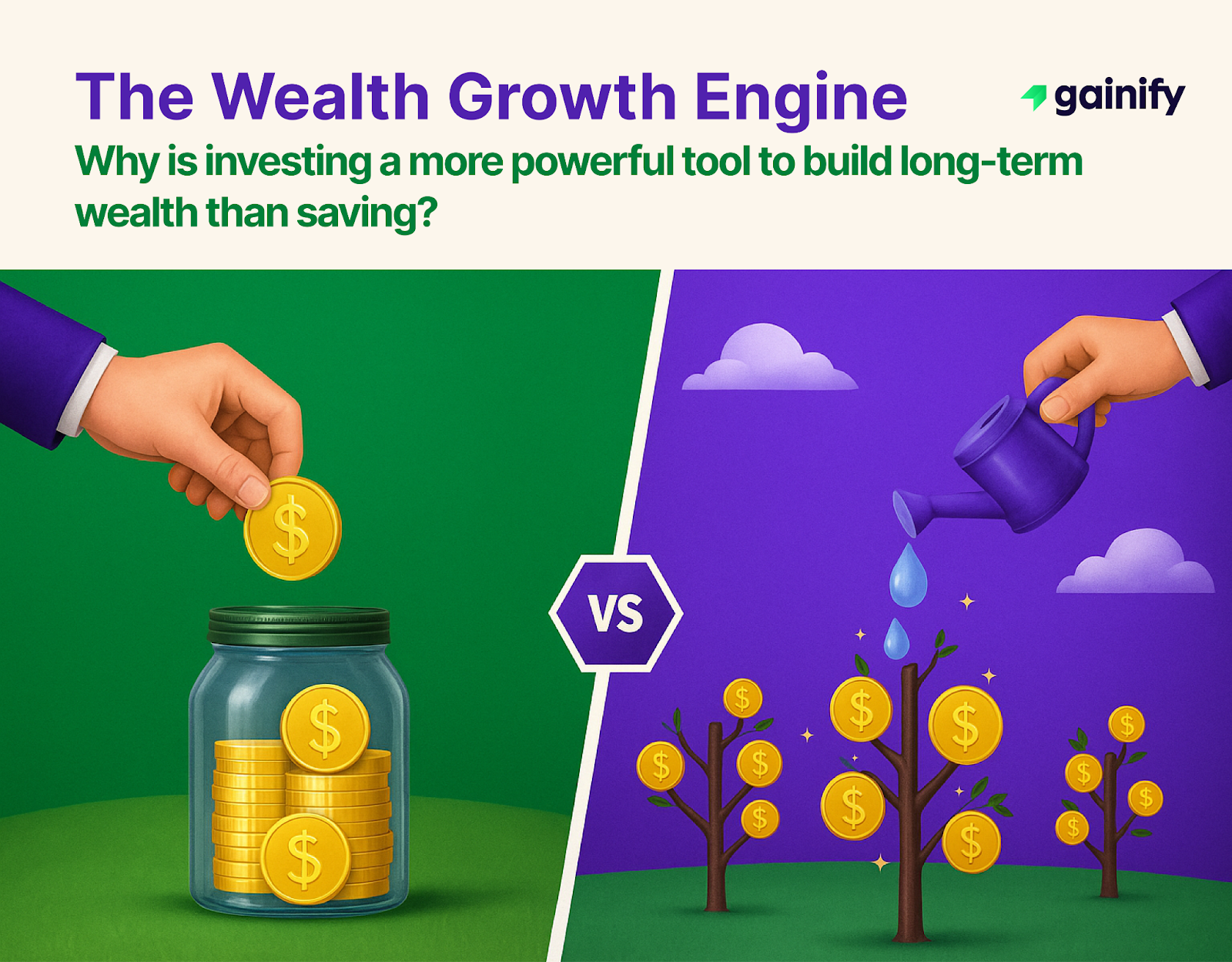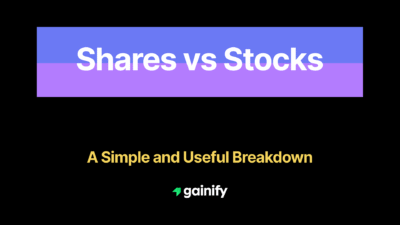The journey to financial security often begins with a universally accepted piece of wisdom: “Save your money”. This advice, instilled from childhood, guides us to set aside earnings, build reserves, and live within our means. Indeed, accumulating funds in a secure account offers immediate peace of mind and a sense of preparedness.
Yet, for those aspiring to achieve true long-term wealth and financial independence, merely saving money, while essential, represents only half of the equation.
The subtle forces of economics tirelessly work against static savings. Over extended periods, the purchasing power of money held in traditional savings accounts quietly erodes, diminished by an unseen yet relentless phenomenon:
What feels like a growing balance today can buy significantly less tomorrow, turning passive accumulation into a gradual depletion of real wealth. This challenge underscores a critical distinction in personal finance.
The true engine for creating enduring prosperity, a principle consistently observed in financial transformation, lies beyond simple saving. It resides in the dynamic world of investing, where capital is actively deployed to generate returns that can outpace inflation and harness the incredible power of compounding. This strategic deployment is what truly separates comfortable living from genuine long-term financial growth.
This article will illuminate the fundamental differences between saving and investing, revealing why one is a foundation while the other is the primary catalyst for wealth creation. We will unpack the mechanisms through which investing builds substantial long-term wealth, explore its inherent advantages, and clarify its indispensable role in achieving your grandest financial goals. These are essential topics in effective financial planning.
The Quiet Erosion: The Challenge of Saving Alone
Saving, at its core, involves placing money in highly liquid, low-risk accounts, such as a traditional savings account or a checking account. This practice is undeniably crucial for maintaining financial stability and building an emergency fund. It provides immediate access to cash for unexpected expenses or short-term financial goals, offering a vital sense of security, much like holding short-term Treasury bills.
However, the power of saving alone for long-term wealth is severely limited by a formidable economic force: inflation. As the general price level of goods and services rises over time, each dollar saved loses a portion of its purchasing power. For instance, if inflation runs at 3% annually, money sitting untouched in a savings account earning 0.5% interest will actually decrease in real value each year. This is the silent erosion of wealth.
This phenomenon represents a significant opportunity cost. Funds held in low-yield accounts, such as certificates of deposit (CDs) with low interest rates, miss out on the potential for substantial compound growth that can be achieved through disciplined investment strategies. The interest rates offered on typical savings vehicles rarely keep pace with even moderate inflation, let alone generating significant real returns over time.
Therefore, while saving is vital for short-term needs and liquidity, relying solely on it for long-term wealth creation effectively means allowing your money to diminish in real value over time. It’s a strategy of capital preservation, not active growth, making it insufficient for achieving ambitious long-term financial goals such as a comfortable retirement planning or funding a college fund.
The Dynamic Force: How Investing Builds Wealth
Investing, in contrast to saving, involves committing capital to various financial instruments or assets with the expectation of generating a return. This dynamic approach engages your money in the broader economy, allowing it to work actively on your behalf. It is the primary engine for building substantial long-term wealth and achieving true financial growth. These are known as non-deposit investment products, distinct from bank accounts.
The core mechanism behind investing’s power is compounding. This is where your investment earnings themselves begin to earn returns, creating an exponential growth effect over time. This concept, often called compound growth, is why even small contributions can become substantial. For example, dividends reinvested into more shares, or interest earned on a bond, contribute to a larger base, accelerating future growth.
Investing provides diverse avenues for capital appreciation and income generation. By putting money into stock markets (like stocks bonds), real estate, or bonds, you participate directly in economic expansion. Equity investments offer potential for significant growth as companies expand, while fixed income investments provide regular interest payments and capital preservation. This active participation aims to deliver substantial future returns.
Crucially, investing offers the potential to outpace inflation, thereby preserving and growing your real purchasing power over the long term. Well-chosen investment strategies aim for returns that not only negate inflation’s effects but actively increase your wealth in real terms, securing your financial future. This proactive approach ensures your capital remains robust against rising costs, a key advantage provided by diverse investment product types, including those offering tax benefits like tax-deferred growth.
The Fundamental Distinction: Risk and Return
The fundamental difference between saving and investing lies in their approach to risk and return. Saving prioritizes capital preservation and liquidity, accepting minimal level of risk in exchange for negligible returns. This makes it ideal for immediate needs but largely ineffective for long-term wealth accumulation.
Investing, conversely, involves a deliberate exposure to varying degrees of risk for the potential of higher investment returns. For example, equity investments like stocks carry the risk of market volatility but offer substantial growth potential. Bonds present less volatility than stocks but typically offer lower returns, trading safety for rapid growth. This risk-return trade-off is central to investing.
By participating in asset classes such as stocks, bonds, real estate, or alternative assets, investors connect their capital to economic productivity and innovation. This direct involvement allows them to capture the returns generated by global markets and economic expansion. Saving, on the other hand, keeps money static and isolated from these growth opportunities.
This distinction empowers individuals to make informed decisions about their capital. Understanding the unique role of each, within one’s risk tolerances and investment goals, is vital. It’s about recognizing that money must work actively, rather than passively resting, to achieve true financial growth over extended periods.
Nuances and When Saving is Paramount
While investing is the dynamic engine for long-term wealth, a truly robust financial strategy always recognizes the non-negotiable role of saving. THE ABSOLUTE PRIORITY FOR ANY INDIVIDUAL SHOULD BE TO ESTABLISH A FULLY FUNDED EMERGENCY FUND, typically three to six months of living expenses, held in a highly liquid and secure savings account. This essential buffer protects against life’s unpredictable events, preventing premature liquidation of investments during market downturns.
Furthermore, saving remains the optimal choice for short-term financial goals, generally those intended to be realized within one to two years. For instance, funds earmarked for a near-future vacation, a car down payment, or anticipated tax payments should reside in a secure savings account or money market fund. Their minimal level of risk ensures the capital is available precisely when needed, without exposure to market fluctuations.
Saving also plays a crucial role in fostering behavioral discipline. The habit of consistently setting aside money, regardless of the amount, builds a foundational financial habit that is indispensable before embarking on the complexities of investing. This initial discipline, whether through automated transfers from a checking account or careful budgeting, underpins effective portfolio management in the long run.
However, once short-term needs and emergency reserves are secured, neglecting to transition capital into investment vehicles for long-term wealth becomes a significant oversight. Leaving substantial sums in low-yield savings accounts means consistently losing purchasing power to inflation, effectively leaving valuable future returns on the table.
FAQ: Investing vs. Saving
Q1: Can saving alone ever build significant wealth?
A: While saving accumulates nominal amounts, it struggles to build significant long-term wealth due to inflation. Your purchasing power diminishes over time. For example, $10,000 saved in a low-interest account in 2025 might only have the buying power of about $7,441 in 2035, given a 3% annual inflation rate. This is why non-deposit investment products are key for growth.
Q2: What is compound interest and why is it important for investing?
A: Compound interest is the process where earnings on your investment generate their own earnings. It’s like a snowball rolling downhill, growing larger exponentially over time. This power of compound growth is the primary reason why investing is more effective than saving for long-term financial growth. A compound interest calculator can vividly illustrate this.
Q3: How much money should I save before I start investing?
A: As a general rule, establish a fully funded emergency fund first, typically covering three to six months of essential living expenses. This provides a crucial safety net before you expose capital to investment risk. Once this is set, you can begin your financial journey into investing, aligning with your personal financial situation and risk tolerance. Seeking professional advice from a financial advisor can also help.
Q4: Is investing always a better option than saving?
A: No, investing is not always better. Saving is crucial for short-term goals (within 1-2 years), your emergency fund, and for funds where capital preservation is paramount and market volatility is unacceptable. Investing is superior for long-term goals (over 3-5 years) where you have the time horizon to ride out market fluctuations and benefit from growth. The choice depends on your investment goals and risk tolerance, influencing the appropriate level of risk.
Q5: What are common mistakes people make when choosing between saving and investing?
A: Common mistakes include:
- Keeping too much cash in low-yield accounts for long-term goals, losing to inflation.
- Investing money needed in the short term, exposing it to unnecessary market risk.
- Failing to understand their true risk tolerances.
- Not having a clear financial strategy for either saving or investing, or failing to diversify your investments.
Insights for Optimal Financial Growth
Mastering the distinct roles of saving and investing is fundamental to achieving robust long-term wealth. Saving provides the essential bedrock of financial security, while investing acts as the dynamic engine for true financial growth.
- Saving establishes critical financial security and funds short-term goals, but its purchasing power is constantly eroded by inflation over time.
- Investing actively builds wealth by harnessing the power of compounding and capital appreciation, aiming to outpace inflation and achieve substantial long-term financial growth.
- The crucial distinction lies in the deliberate assumption of risk in investing for the potential of significantly higher returns, compared to saving’s low-risk, low-return profile.
- An optimal financial strategy integrates both: prioritizing an adequate emergency fund first, then leveraging diversified investments for compound growth towards long-term objectives.




